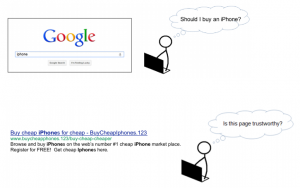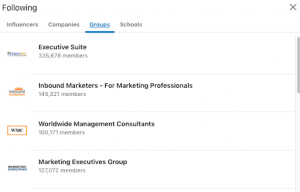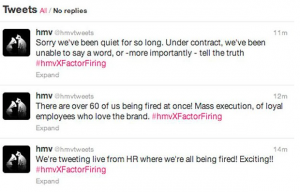When it comes to developing conversion optimization strategies, there are a lot of decisions to make. Phrasing the messaging, designing the campaign, and formulating the strategy itself are all factors to consider. How do you know which direction to go, which choices will be the most effective at boosting conversions? This is where A/B testing comes in to help take the guesswork out of those decisions.
What is A/B Testing?
Also known as split testing, A/B testing involves presenting two versions of the same campaign to different visitors over the same time period to compare which version drives more conversions. The two variants may differ in messaging, design, or strategy, but all other elements should be held constant for reliable results.
Difference Between A/B Testing and Multivariate Testing
It’s important for businesses seeking to start A/B testing not to get this approach confused with multivariate testing. A/B testing differs from multivariate in that it compares two separate versions of the campaign, typically isolating one variable to assess its effect on conversions. Multivariate testing, on the other hand, assesses the effects of multiple variables at once by comparing multiple versions of the campaign. A/B testing requires relatively less traffic to obtain conclusive results and is the best approach for conversion rate optimization.
The Benefits of A/B Testing
“So, what’s the point of all this?” you may be thinking. “Why should I go through all the work of A/B testing my campaigns?” The answer is quite simple: Because it pays off.
By putting in the time and effort to test campaigns, you provide yourself with the opportunity to find the strategy that will perform best for your business. Since each potential customer is worth a lifetime of revenue, each additional conversion is exponentially valuable. In addition to achieving a higher conversion rate, you’ll lower your bounce rate, reduce abandonment, improve the user experience, and increase engagement on your site.
A/B Testing: An Online Retailer’s Guide
A/B testing is all about maximizing the performance of your on-site strategies. But which elements of those strategies can make a difference? Let’s take a look at some of the things you can test.
Messaging
Messaging can make a big impact on the response your site visitors have to your conversion strategies. If your communication doesn’t resonate with them, they won’t convert. Different audiences will respond to different things when it comes to messaging, and A/B testing can help you decipher what connects best with your shoppers. Some of the messaging elements you might pit against each other include the following.
Creative vs. Generic
Do your shoppers prefer a straightforward message or would they be better engaged by something more creative and witty? Try coming up with one creative and one generic headline to find out.
Short vs. Long
Will people give up on reading your message halfway through or does the shorter headline fall short of getting your message across? Only the data can tell you for sure!
Urgency vs. Non Urgent
Some shoppers may be compelled by urgent messaging, others may be turned off by it. A/B testing can tell you which camp the majority of your visitors fall into.
Design and Layout
Just like with messaging, the design and layout of your strategy may resonate differently with your shoppers based on a variety of factors. It can be hard to determine which design elements are essential and which ones border on too much. A/B testing can help you tell the difference.
Pop-up vs. In-page
A pop-up grabs your shopper’s attention and forces them to engage with your strategy, while an in-page layout is more native and doesn’t disrupt the shopping experience. The data from your test can help you determine which style is more appealing to your site visitors.
Video vs. Static Image
A video can add a bit of intrigue to your design, but a static image is less busy and can make for an easier read. If you’re unsure which will be a better option when it comes to encouraging conversion, an A/B test pitting one option against the other will show you the answer.
Lifestyle Image vs. Product Image
Some shoppers may respond best to a human face, while others might like seeing a well-staged product photo. Testing a variation with a lifestyle image against a variation with a product image will provide you with conclusive information about which will be more compelling to your shoppers.
Calls to Action
You may not think about it right away, but even something as simple as your call to action button can have an impact on whether your shoppers convert. Is the button designed in a way that makes visitors want to click on it? Is the copy compelling enough? Put it to the test and find out!
Color
It can be hard to determine which color will make your CTA the most eye-catching without being too much. If you’re stuck between something brighter and something more simple, testing them against one another will help determine which is the best choice for your brand.
Size
How big is too big? How small is too small? It can vary depending on the business and the shopper. Testing one bigger and one smaller CTA button will provide you with information about which size best compels your shopper to click.
Copy
Different verbs in your CTA copy may prove to be more intriguing to your shoppers than others. The only way to find out for sure is to put two variations to the test.
Strategy
Another campaign element in which A/B testing can help you determine the right path to take is the strategy itself. Don’t know whether to engage new or returning visitors? Waffling on whether or not to offer an incentive? The data will provide answers to these questions and illuminate which way you should go.
New vs. Returning Engagements
Try comparing a campaign that runs on new customers against one that engages returning customers. The results of the test can help you determine which segment is more likely to convert so you know where to invest your time and energy.
Incentive vs. Non Incentive
If you didn’t have to offer an incentive to get your shoppers to convert, wouldn’t you want to know? A/B testing an incentivized strategy against a non-incentivized one can give you definitive evidence on the incentive’s effectiveness and whether it’s really worth it to offer one.
Mistakes to Avoid When A/B Testing
Declaring a Winner Too Soon
An essential factor in A/B testing and determining a winner is statistical significance. If your test doesn’t run long enough for you to obtain statistical significance, you can’t really be sure if the leading variation is the one you should go with. Don’t jump the gun. Wait until you can be absolutely sure of the winner before you pick a direction.
Testing Too Many Items at Once
If you really want significant and relevant results, it’s important not to test too many factors at once. You may get overwhelmed with all the possibilities and want to test as many things as possible, but if you compare your messaging, design, and strategy all at once, you won’t be able to tell which played the biggest part in conversions. Singling out one element to test allows you to attribute the results of the test completely to that one piece of the puzzle.
Changing Variables Mid-Test
Once you have picked which variable to test, you should stick with that variable for the duration. Changing variables mid-test only ensures you won’t get statistically significant results for either variable, and then the whole thing will have been a waste of time. Wait for the first test to run its course before you decide to test another variable.
More Information, Better Results
A key element of increasing conversions in e-commerce is making data-driven decisions. A/B testing allows you to make informed, efficient decisions for your business. Moreover, you can be confident those decisions will achieve the desired results. Take the guesswork out of conversion optimization and start testing your strategies. It will save your business time and money in the long run.
Looking for More Ways to Increase Conversions?
Check out UpSellit’s 27 Attributes of an Effective Email. This in-depth guide covers the ins-and-outs of crafting the perfect remarketing email. It’s a great resource and it’s totally free! Download it today and start writing awesome emails that convert.
Digital & Social Articles on Business 2 Community(51)






